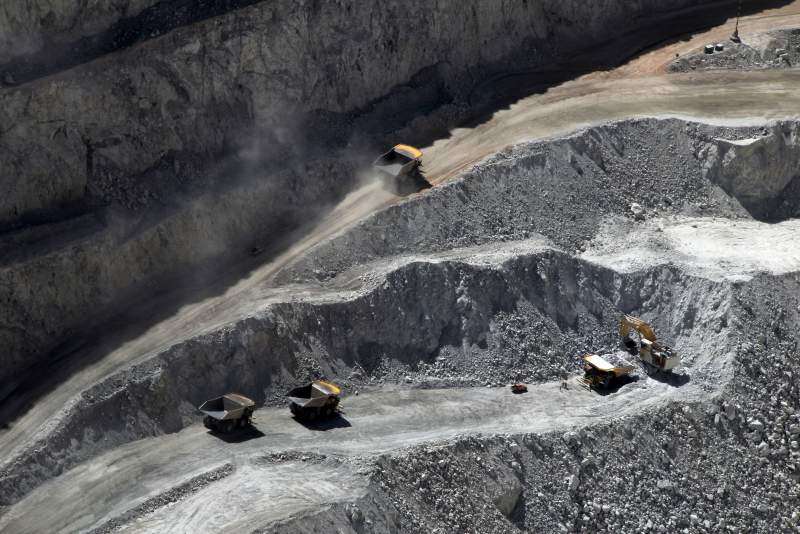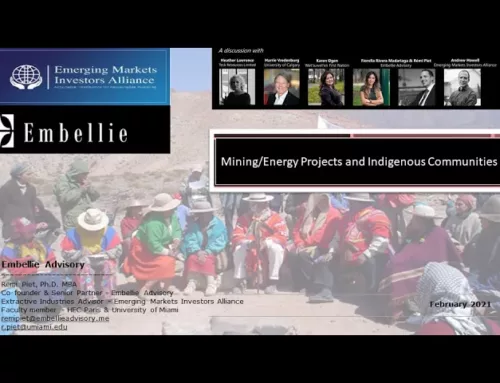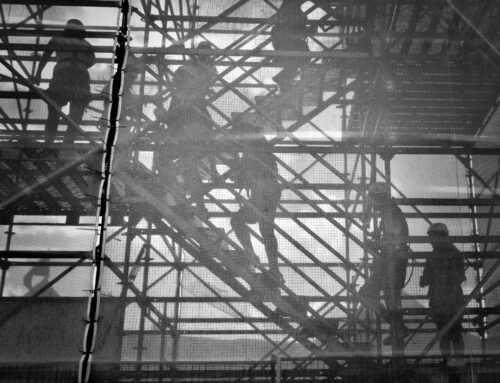The Future Of Infrastructure Investment In Latin America
After 10 years of commodity-driven economic fiesta, Latin America’s long-awaited hangover took hold in 2015. The region has been in a funk ever since but appears poised to begin growing again, albeit gradually. The last two years (2015-16) have been hard on an indebted region. The corporate sector is only halfway through a painful restructuring process in an effort to liberate balance sheets of costly debt, much of it dollarized. Consumers are better off, having lowered their debt levels, most importantly in Brazil, Chile, and Colombia where they were excessively high. Governments are still grappling with unraveling a massive fiscal expansion from 2004-2013 that saw annual revenues (and outlays) grow at 13% CAGR in USD. Thus it hardly seems like an optimal time to be talking about infrastructure.
However, the region’s more visionary leaders understand that infrastructure is the key to lifting Latin American competitiveness, even if the public sector can’t fill the bill. Energy prices are forecast to remain low for the foreseeable future and other commodities will enjoy only a modest reflation. So if Latin America is to raise per capita incomes, it must be done through productivity gains built on the shoulders of infrastructure improvements.
A Dollar Short and a Decade Late
Back in 2012, ECLAC estimated that LatAm markets should invest annually 6.2% of their GDP – some $320 billion dollars across the region – to satisfy the most immediate infrastructure demands in the period 2012-2020 and catchup with competitors1. Half of this sum would go to the maintenance of existing structures while the rest should finance new developments in the region. Yet during the abundance of the commodity super-cycle (2004-2013), Latin America spent less than 3% per year (private and public investments) on infrastructure, less than enough to maintain in working order existing structures, much less play catch-up.
In a more recent 2015 publication from the IADB, comparative stats showed that the highest infrastructure investors (as a % of GDP) between 2008 and 2013 were Honduras, Panama and Nicaragua, three commodity net-importers whose terms of trade suffered during the commodity boom. At the same time, commodity rich Argentina, Brazil, and Chile all underspend by LatAm standards. That half decade of statistical evidence supports the notion that infrastructure spending relies more on political will than fiscal possibility.
Latin America competes on the global stage in broadly three areas:
- Primary goods, whose extraction, transformation and export relies on world-class transportation and energy infrastructure, often in remote areas.
- Manufacturing of low- to mid-tech products that requires free trade agreements, fluid customs processes and highly competitive transportation infrastructure.
- Tourism, which depends upon public safety and modern airport infrastructure.
Unlike India, which similarly boasts poor infrastructure, Latin America does not compete effectively in high-value outsourced service sectors where Internet connectivity alone will suffice. Latin American competitiveness requires old-fashioned asphalt and power infrastructure to move people and products. During the commodity super-cycle, exports swelled but the uptick came from pricing, not volumes. In almost every resource category, Latin America lost market share to commodity competitors who invested in infrastructure to enable more product to get to port, including: Canada, Australia, Russia, the Middle East, Sub-Saharan Africa, the US and even China.
The economic case to be made for infrastructure is compelling. In a 2010 study, economists Calderón and Servén estimated that for every 1% of GDP spent on infrastructure, the economy would grow by 2.5% in Brazil, 1.8% in Argentina, and 1.3% in Mexico beginning within three years of the initial outlay. Similar multiples can be found in other emerging markets. Little wonder, then, that South East Asian economies have spent an average of $235 billion dollars a year in infrastructure over the last 5 years2 and demands in the continent are expected to reach a trillion dollars a year in the next ten years3. Africa is also catching up at a rapid pace4.
When each major Latin American economy’s infrastructure is benchmarked against its global competitors (who export similar mixes of products), as the chart above depicts, only Chile even competes within the range of rivals, whereas every other LAC country underperforms vis-à-vis their multiple competitors.
Financing Infrastructure
Every government in Latin America today faces higher debt levels (as a % of GDP) than they did at the beginning of the commodity super-cycle. Mid-high levels of foreign debt combined with climbing U.S. interest rates, low commodity prices, unsustainable fiscal deficits and weak currencies translate into minimal public investment in infrastructure over the next 3-5 years in Latin America. The next generation of infrastructure will be financed by the private sector, including yield-seeking commercial banks, growing Latin American pension funds as well as international equity investors and non-bank lenders.
The likely 75 basis point increase by the US Fed in 2017 will place new burdens upon long term financing projects in Latin America. Governments like Colombia, Mexico, Brazil and Chile who designed ambitious PPP projects using more benign market assumptions must now recalculate their projects taking into account a growing list of headwinds facing the region, which beyond a hawkish Fed include: continued low energy prices, high Latin corporate debt levels, a potentially costly US import adjustment tax and litigation risk from the Lava Jato case which now implicates Odebrecht malfeasance in Colombia, Peru, and Panama, which is slowing project finance flows in those countries.
Latin America’s frothy corporate credit market conditions that drove corporate debt from $170bn (2010) to $406bn (2016) will soon grow more scarce. Beyond the aforementioned headwinds, commercial banks now must adhere to Basel III regulations which punish lenders who back greenfield and construction phase projects. That will frighten off some lenders but those who stay stand to make margins unseen in the region in over a decade. For equity investors in the next wave of infrastructure projects, squeezing host governments into more accommodating PPP terms may take some time but the political pressure to show progress will force governments to fold. Similarly, building costs in Latin America should come down given the continued soft demand for construction. Savvy infrastructure investors who know how to project manage and control costs stand to do very well given the pressure on governments to accelerate permitting and reduce corruption.
In a more capital scarce environment, the concerns of infrastructure financiers (displayed in the chart above) should find more receptive ears from host governments anxious to jump start their economies with much needed projects.
The Growing Popularity of PPPs in Latin America
Governments across Latin America are scrambling to invent or revamp their PPP (Public-Private-Partnership) legal structures as well as create private concessions that can attract international infrastructure investors. Even Jamaica and Paraguay –traditionally known for their lack of readiness for private investments – have updated their PPP and concessions laws, and set up new government agencies or specialized units within existing government institutions that structure long term agreements with private investors.
Colombia has enjoyed recent success at attracting infrastructure investment through PPPs. Key projects have recently been launched such as the Bogotá’s subway system – with its first line design unveiled in October 2014 – which includes 27km of track and an equal number of stations at an estimated cost of US$7.5 billion. Other recent projects in Colombia include key road infrastructures such as the Bucaramanga–Barrancabermeja–Yondó concession (US$715 million) which requires the construction of more than twenty bridges and two tunnels, the 79km double-lane Neiva-Girardot road construction (US$980 million), the 260 km Villavicencio–Yopal double-lane highway and the 290 km double lane construction and improvement of the Rumichaca–Pasto road (each one representing US$1,000 million). Those projects are part of a national program of highway development that will multiply by five the length of quality roads in the country (the 4G program – the fourth generation of road concessions). More than 2600km of two-lane highways will be built by the end of 2018 and a total of 6000km of new roads for an estimated value is US$22 billion, jointly financed by public contributions and private funds obtained via equity and debt. The projects will be carried out through PPP schemes with 20- to 30-year concessions awarded to project sponsors. Its success lies in the fact that the government made significant efforts to ensure that real estate, environmental and social risks were mitigated to a level in which sponsors would be able to start construction as soon as financial closing is ensured.
While Colombia’s PPP models are nascent, other countries in the region can boast a more established track record. The Mexican PPP Law of 2012 provides an innovative framework of risk allocation on a case-by-case basis, setting limitations of contract renegotiation and regulating the involvement of private capital together with FONADIN – the national infrastructure fund – in the provision of public goods, services and technical innovation. This PPP system has also been implemented in the completion of social infrastructure projects, and in particular for the construction and operation of prisons as well as a large number of healthcare facilities. It will serve as a proven framework for the coming wave of infrastructure investments in the country as the government of Mexico wants to attract more than US$600 billion in its energy, transport, telecommunications, water and environment sectors over the next ten years.
As often is the case in Latin America, Brazil and Chile are the two countries who set early standards for regulatory frameworks, in this case Public Private Partnerships. Chile issued dedicated regulations as early as 1996 which allowed for the completion of both public transportation system and social infrastructure (prisons or hospitals such as the Salvador Geriatric Facility). The most common agreement structures for public infrastructure is the BOOT framework (build, own, operate, transfer) under which US$ 11 billion worth of projects have been achieved over the last decade, in particular for toll roads, airports and ports. The Chilean law needs to be revised however as modern forms of PPP such as hybrid financing (partly financed by project financing and corporation funds) need to be better regulated.
Chile designed an infrastructure program – labelled Chile 2020 – which included investments of up to US$28 billion in 25 PPP-based projects and which became a top priority after the country was hit by a massive earthquake in February 2010 causing damages in power generation, telecommunications and transportation infrastructure estimated at around US$1.2 billion. The relatively high quality of the country’s regulatory framework and its economic and political stability led to the success in the tendering of several concessions such as Santiago’s Arturo Merino Benitez Airport in February 2015 which attracted biddings from more than 10 international companies. A series of ambitious infrastructure projects will be up for bidding in the coming months5.
Brazil put in place a solid regulatory framework in 2004 with a comprehensive law. The first ensuing PPP project was approved by the Government of the State of São Paulo in 2006 for the construction and operation of the São Paulo Metro. Within the current framework, concessions are awarded for period ranging from 5 to 35 years and private sector investment must reach a minimum of BR£20 million (US$8.82 million), representing at least 30% of the consolidated cost of the project. Although local funding is insufficient to cover the maintenance needs and development of needed infrastructure, financial mechanisms do exist through government financial institutions such as the Caixa Economica Federal, a promoter of urban development, and the Brazilian Development Bank (BNDES) who represents the main financing institution for infrastructure development in Brazil.
The main opportunities for future investments today are in the field of energy and transportation. In energy, the country plans for the development of more than 15,000 km of transmission and hydroelectric projects over the next three years, spearheaded by the 6,133 MW São Luiz do Tapajós hydroelectric power plant (HPP) on the Xingu River, valued at US$9.2 billion. The country also suffers from the poor quality of its ports, railways, airports, roads and distribution centers. As a result the government announced a series of calls for the construction of railroad networks6 and roads7 in the country.
Two countries have made important strides in the codification of the regulatory conditions framing public-private partnerships for the development of infrastructures: Peru and Uruguay. With an average GDP annual increase of 5% over the last ten years, Uruguay needs to promptly upgrade its infrastructure to maintain the sustainability of its growth. As a result, the country adopted two decrees (Nº 017/012 and 280/012) to coordinate and improve the technical evaluation of future PPPs. The country is yet to adopt a comprehensive legal framework however as the current law in effect (Ley Nº 18.786) only applies to transport infrastructure and alternative energy projects, while other sectors such as water infrastructure are not included within the scope of the legal agreement. The PPP law however is comprehensive and clarifies cost-benefit analyses, risk allocation, assessment of fiscal risk, as well as the process to identify and plan future projects8.
Peru had been lagging behind for several years with a PPP regulatory framework mostly adapted to small-scale social infrastructure (prison, hospitals). Nevertheless PPP projects reaching an investment amount of close to US$16 billion have been awarded in Peru over the last five years and this amount should increase as the regulatory framework for infrastructure projects was strengthened by a new law in 2015. The new legislation includes the establishment of investment committees, the emphasis on evaluation reports, and the creation of windows of opportunity to submit unsolicited proposals for projects aimed at the national level9.
The new law establishes the creation of a series of new governmental agencies to help regulate public private partnerships in infrastructure and beyond according to the sector of activity. If the National Investment Promotion Agency (“Agencia de Promoción de la Inversión Privada”, Proinversion) remains the central institutional body to structure PPPs, it is supported by specialized governmental stakeholders such as OSIPTEL (telecommunications), OSINERGMIN (energy), SUNASS (water and sanitation), and OSITRAN (transport). Best practices recommended by OECD’s Principles for Public Governance of PPPs have also been incorporated in the new law which minimizes fiscal risks through transparent budgetary processes and establishing a clear institutional framework.
As a result, since the adoption of the law, more than 20 PPP project portfolio were awarded including 8 projects in transport and 4 projects in energy. The most important infrastructure is without doubt the development of the Lima metro network whose budget is estimated to be above US$5 billion dollars. ProInversion conducted technical studies and promotion of private investment around the concession of the design, funding, construction, operation and maintenance of Lima Metro’s Line 2. The governmental institution is also set to conduct pre-investment studies for Lines 3 and 4. Outside of the capital city, the Longitudinal de la Sierra road project is set to break the isolation of several remote regions. It includes the improvement, rehabilitation and maintenance of 428km of roads for a budget of US$178 million.
On November 30th, 2016, Argentina passed law 27,328 which regulates PPP contracts. The new operating rules are designed to attract investors to a recently approved package of $35bn of transportation infrastructure projects. This is quite a turnaround for a country ranked 2nd last in the hemisphere for infrastructure investment conditions only two years ago. Locked out of international lending markets for more than a decade, Argentina enjoys very low levels of corporate and government debt. Therefore early investors in a rejuvenated Argentine economy should enjoy attractive returns as a recapitalized capital markets bring accelerated growth over the next 3-4 years. As the most under leveraged economy in Latin America, Argentina should enjoy a long runway of above average growth assuming the political climate remains supportive of investors.
On a final and cautionary note, Argentina serves as a useful reminder that international investment monies move slowly when market conditions change, even for the better. After making all the right moves over the last year, Argentines are still waiting for the pledged foreign direct investment monies to be deployed in their economy. Host governments across Latin America will have to make very compelling cases to international investors to convince capital to swim against the stream of economic headwinds that presently are pushing monies back to US equity and bond markets. Not only must the PPP terms be sweetened, but red tape must be cut, permitting streamlined, and project conditions eased. For the risk tolerant investor who knows how to negotiate such conditions from host governments, it promises to be an arduous but profitable decade ahead in Latin American infrastructure.
[1] http://www.cepal.org/en/pressreleases/paises-de-la-region-deberian-invertir-62-del-pib-anual-para-satisfacer-demandas-de
[2] South Korea $110bn/yr, Indonesia $65bn/yr; Malaysia $20bn/yr, Vietnam $20bn/yr, Singapore $10bn/yr, Thailand $10bn/yr, Philippines $10bn/yr https://www.pwc.com.au/asia-practice/publications/pwc-a-summary-of-south-east-asian-infrastructure.pdf
[3] http://www.mckinsey.com/industries/private-equity-and-principal-investors/our-insights/asias-1-trillion-infrastructure-opportunity[4] https://www.brookings.edu/wp-content/uploads/2016/07/AGIFinancingAfricanInfrastructure_FinalWebv2.pdf[5] These include the Costanera Central highway (US$1.98bn); the La Serena–Coquimbo road; the development and expansion of Iquique’s Diego Aracena and Puerto Montt’s El Tepual airports; the Punilla reservoir; as well as irrigation canals, shipping and a coastal road that will run for two-thirds of the length of the country[6] Upcoming railroad projects between Rio de Janeiro and São Paulo include the Vitoria– Rio de Janeiro railway, Uracu–Campos Freight Railway and Rio–São Paulo–Campinas High Speed Rail.[7] A number of major road projects have recently been announced: 103.8km Rodoanel Sul e Leste Highway, Rodovia do Progresso, Northwest Corridor of Campinas EMTU and the Acciona BR-393/RJ Highway PPPs.[8] https://pppknowledgelab.org/countries/uruguay[9] https://pppknowledgelab.org/countries/peru
Contact Americas Market Intelligence to obtain strategic insights into the political, economic and cultural landscape in Latin America that will drive your business decisions successfully in areas such as healthcare, logistics, payment, consumer initiatives, natural resources, industrial, automotive and more.

Dr. Remi Piet is a Director at Americas Market Intelligence (AMI) and co-leader of the firm’s Natural Resources and Infrastructure Practice. Remi leads political and other risk analysis activities for the mining, energy and infrastructure sectors in Latin America. He has worked on projects in more than 60 countries across Latin America, Asia and Europe and taught at several universities including the University of Miami, HEC (Paris) and Qatar University. Be it a snapshot country and counterparty risk analysis ahead of an asset purchase or the on-going monitoring of on-the-ground risks for miners and energy players, Remi leads the design and execution of bespoke engagements for our clients.






